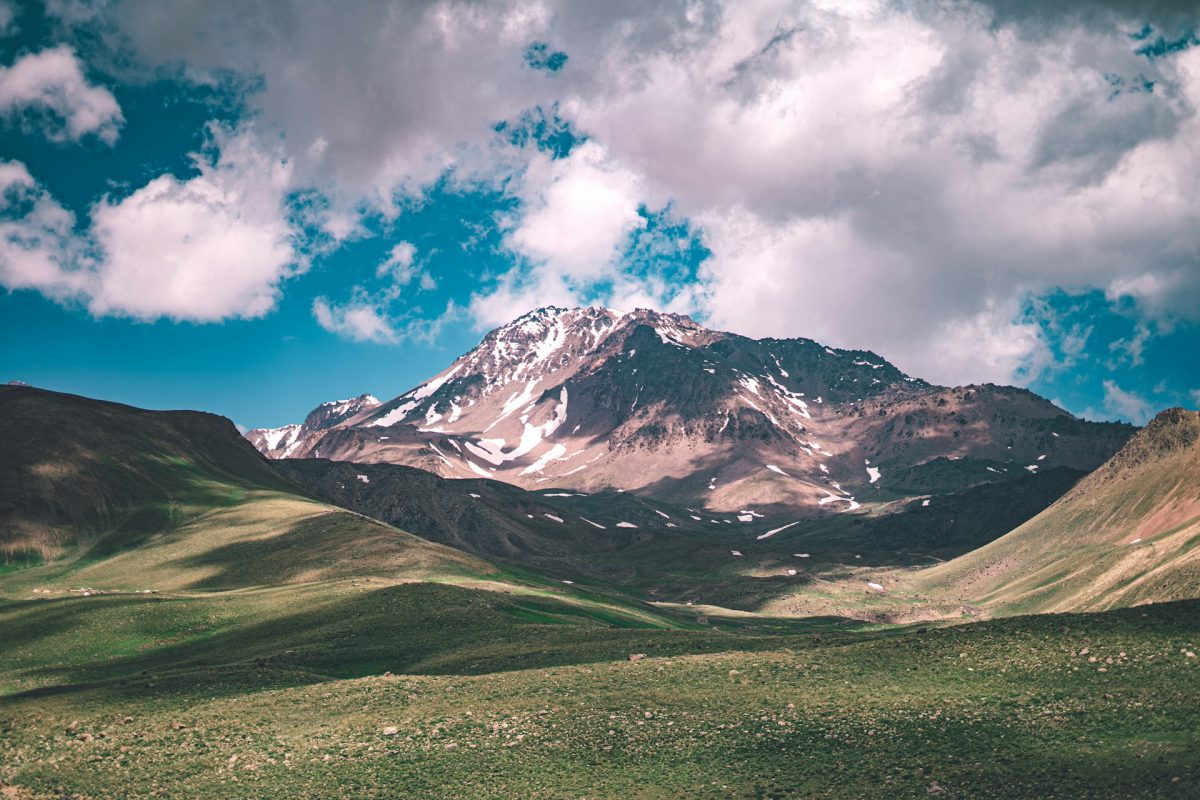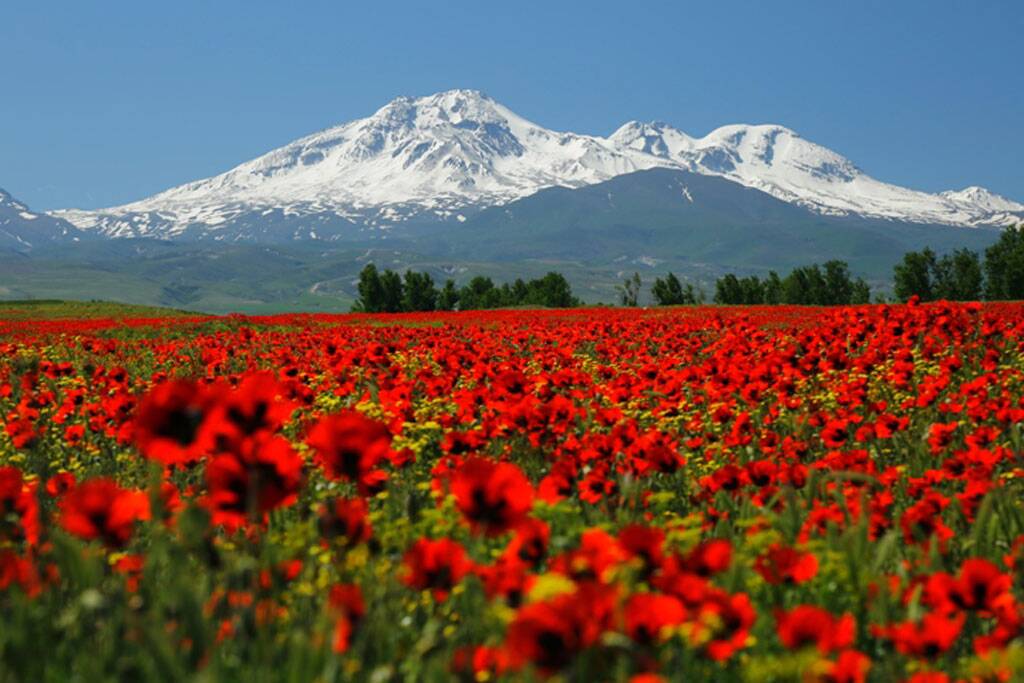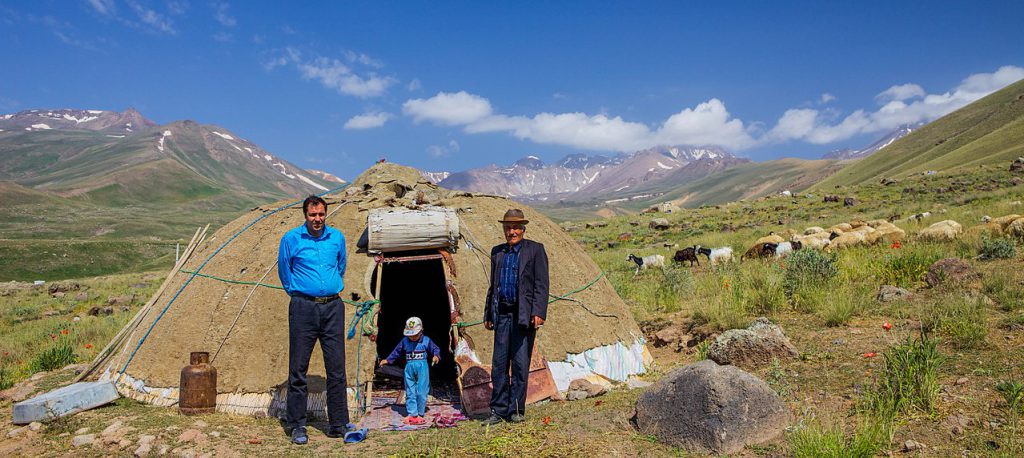Table of Contents
Sabalan Mountain is the third tallest peak in Iran after Damavand and Alam Kuh. This dormant volcano, found in the northwest Ardabil Province, is a treasure trove of natural beauty and exciting sights that attract visitors from all over.
One of the most striking parts of Sabalan is the stunning lake at its peak, resting on the Sultan Peak. This oval-shaped lake remains frozen for most of the year, thawing briefly in late summer to reveal its crystal-clear waters, a sight that captures the hearts of hikers and nature lovers alike. With depths ranging from 15 to 40 meters, the lake’s beauty is truly mesmerizing, offering a view that leaves a lasting impression on all who come to see it.
Apart from the famous lake, Sabalan has three well-known peaks – Sultan, Heram, and Kasra – providing a range of hiking and climbing opportunities for adventurers of all levels. The northeastern route, starting from the Shabil Hot Springs, is a popular choice for climbers, offering a scenic 8-kilometer hike or the option to drive part of the way to the East Shelter.
The mountain’s volcanic past has left behind features like sulfuric springs and hot springs, drawing visitors seeking relaxation and healing. The Sarein Spa, located in the nearby city of the same name, is renowned for its mineral-rich waters believed to have therapeutic properties. Additionally, the Alvares Ski Resort on Sabalan’s slopes provides skiing opportunities year-round, making the most of the mountain’s snowy terrain.
Sabalan Mountain Climate
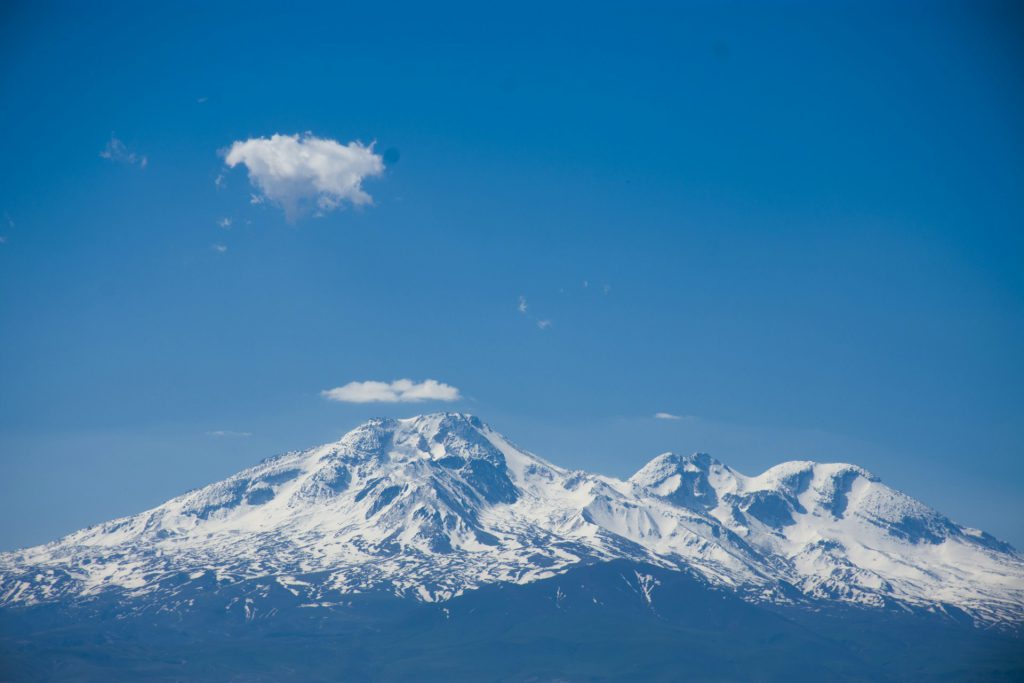
Because of its huge size, Mount Sabalan has a big effect on the climate and plant life in the northwestern part of Iran. This includes the western and eastern Azerbaijan provinces. This area is covered in snow for most of the year. The amount of rain or snow that falls each year is between 400 and 700 millimeters.
On Mount Sabalan, there are permanent natural glaciers. These are large, thick masses of ice that never completely melt, even in the summer. The glaciers are found high up on the mountain slopes. They are created by years and years of snowfall piling up and compressing into dense ice. The presence of these lasting glaciers shows just how cold and harsh the climate is on mighty Mount Sabalan.
Sabalan Mountain Flora and Fauna
Mount Sabalan, among the top 10 tallest mountains in Iran, has five amazing natural glaciers that decorate its rugged landscape. Two of these glaciers are on the foothills of the grand Sultan peak, another two are near Mount Kasra, and the fifth glacier is on Heram Dagh. These icy wonders are not only beautiful but also support the various animals in the area.
The green lands around Sabalan make it a great place to visit in the summer, full of many kinds of animals. From the shy mountain goats and rams to the more noticeable brown bears that sometimes come close to the northeastern huts at night, attracted by leftover food, the mountain is full of life. Birds like the golden eagles and Caspian snowcocks fly high above, while the ground is home to animals such as foxes, jackals, and many kinds of reptiles including agamas and dice snakes.
The plants of Mount Sabalan are as varied and plentiful as its animals, thanks to the rich soil covering the area. The lower foothills are filled with steppe plants, changing to green meadows higher up. This fertile soil supports many different plants, each suited to the mountain’s special climate and soil.
Peppermint and roses add pleasant smells and bright colors, while irises and buttercups make the landscape even more colorful. Barberry bushes, garlic, and cloves grow well here, along with the eye-catching rose madder and the tough Echium. Tulips, one of the most well-known flowers, also grow in Sabalan’s soil. This wide variety of plants not only makes the area beautiful but also helps support the animals, creating a balance between the plants and animals of Mount Sabalan.Top of Form
Sabalan Mountain Crater Lake
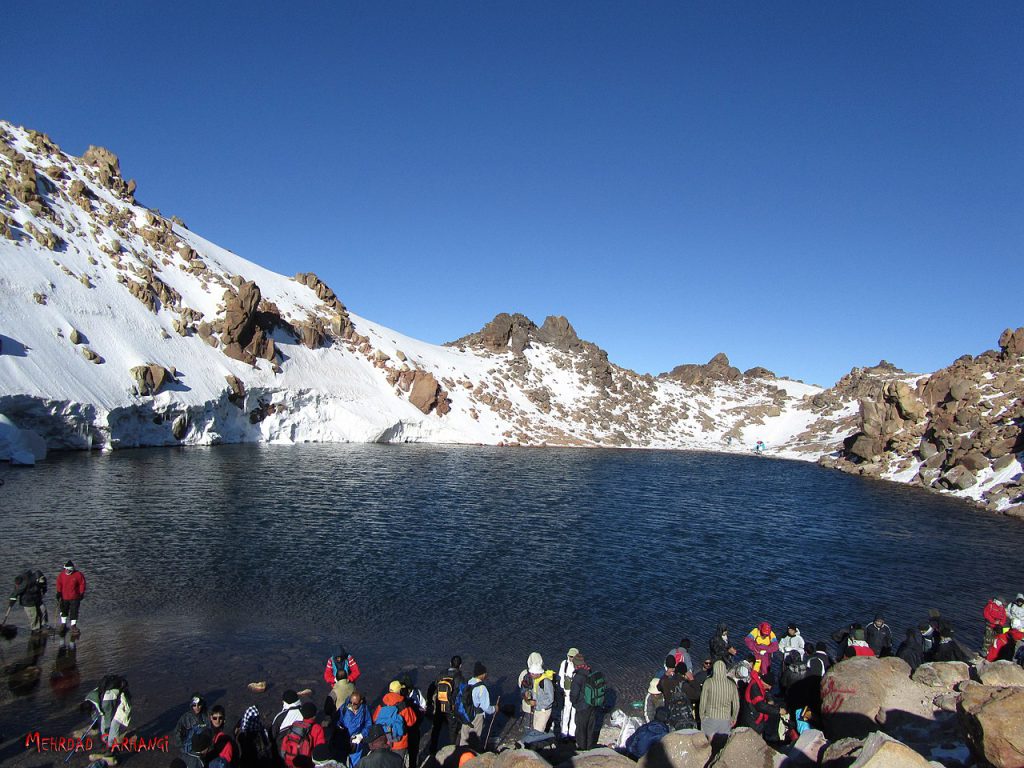
On the very top of Soltan Peak, which is part of Sabalan Mountain Iran, there is an amazing oval-shaped crater lake. This volcanic lake is almost 40 meters deep, which is very deep for a crater lake. The great depth is one of the reasons why this lake is so unique and special in the whole world.
The lake measures 140 meters long and 80 meters wide. All around the lake, there are huge volcanic rocks and stones that even reach into the water itself. These rocks are made of basalt, andesite, and trachyte. The beauty of the lake is maintained by rainwater and melting snow from the peak. The southern part of the lake, where the sun does not shine, is covered with snow and glaciers.
The existence of the crater lake shows the volcanic history of Sabalan Mountain. It was formed a very long time ago by the mountain’s volcanic activity. Now, this geological marvel stands as a great natural creation, shaped over time by erosion and other forces of nature.
The lake is surrounded by the tall peaks of Soltan, Heram Dagh, and Kasra. It attracts adventurers and nature lovers who want to climb up and see this extraordinary sight with their own eyes. With its breathtaking beauty and geological importance, the crater lake of Sabalan is truly a jewel of Iran’s natural landscapes, a must-visit destination for anyone seeking to experience the country’s amazing natural wonders.
Sabalan Mountain Nomads
The big and mighty Mount Sabalan awakens each summer with the coming of roaming Iran nomads looking for a cooler place from the burning hot plains. Among them, the Shahsevan nomads are the most famous, their lively presence adding a wealthy cultural design to the area.
These semi-wandering shepherds, the third-biggest tribe in Iran, follow an ancient rhythm. By the middle of May, their tents dot the lower slopes, offering a look into a way of living that has lasted for many centuries. As the summer moves ahead, they steadily go up to higher places in July and August, looking for cooler pastures for their flocks.
The nomads’ temporary settlements, with their special black tents woven from goat hair, become an appealing sight against the backdrop of Sabalan’s rough peaks. Their lifestyle is deeply connected to the mountain’s cycles, and they come down once more in September, eventually leaving for the Mughan Plain as winter’s chill sets in by November.
More than just a seasonal movement, the Shahsevan nomads’ presence on Sabalan’s slopes represents a living example of Iran’s rich cultural heritage. Their traditional crafts, music, and customs offer visitors a rare chance to immerse themselves in a world that has largely faded from modern life.
From the intricate patterns woven into their tents and rugs to the melodic strains of their music echoing across the valleys, every aspect of the Shahsevan experience is a testament to the enduring spirit of these proud people. Witnessing their daily routines, from caring for their livestock to preparing traditional dishes over open fires, is a humbling reminder of the resilience and adaptability that have sustained their way of life for generations.
Sabalan Mountain Trekking Routes
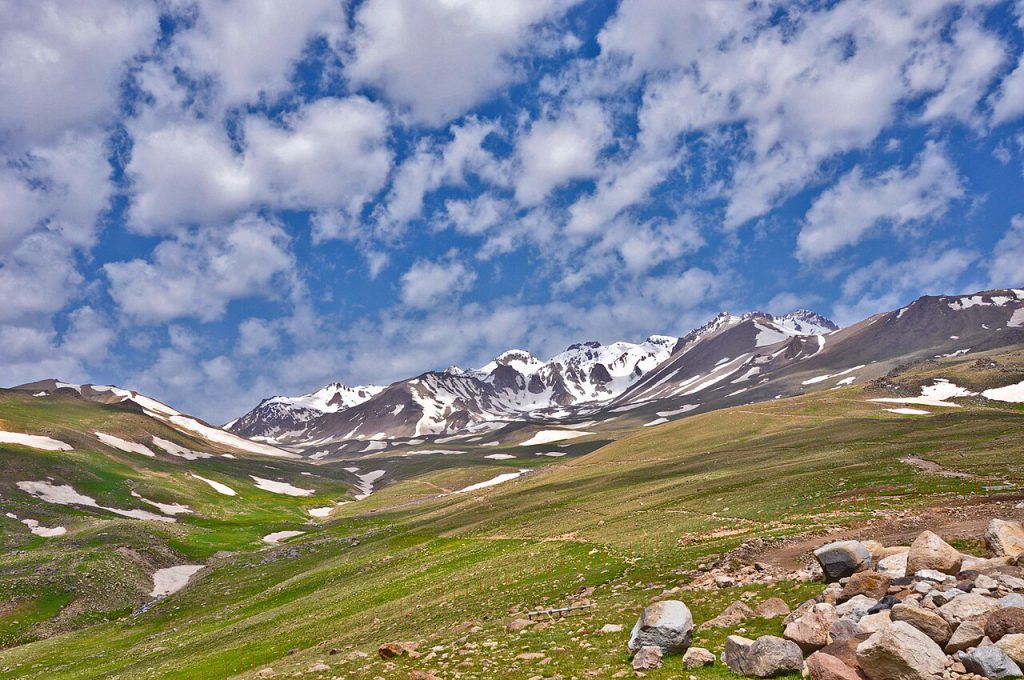
There are several paths for Sabalan Mountain Hike. Each path has small buildings called shelters or huts where hikers can rest and get basic things they need.
The Northeastern Hut is called Masjed or Hoseyniyeh. It is located at a height of 3,700 meters on the northeastern hiking path. To get to this hut, Sabalan Mountain hikers must walk on a dirt road for 10 kilometers starting from Shabil hot spring. The Northeastern Hut has rooms made of stone with wooden or metal beds for sleeping. There is a tiny store inside where hikers can buy some food and supplies, but it is better to bring everything needed from the city because there are not many options at the hut.
The Western Hut is situated at 3,800 meters high on the path to climb Heram and Sultan peaks. Hikers can reach this hut by taking a dirt road from Sarbanlar village to Qarah Gol Lake. The Western Shelter is located at 4,200 meters, west of Sultan peak, and it is the closest shelter to the top of the mountain. This shelter is a small room that can fit up to 10 people.
Near the Western Shelter, there is a rock formation shaped like an eagle sitting and facing east. This rock is called Ghartal Dashi, which means “eagle rock” in the Azerbaijani Turkish language. Over the years, this eagle-shaped rock has become a symbol of Mount Sabalan. There is also a shelter called Kasra Shelter on the path to climb Mount Kasra.
Best Time to Climb Sabalan Mountain
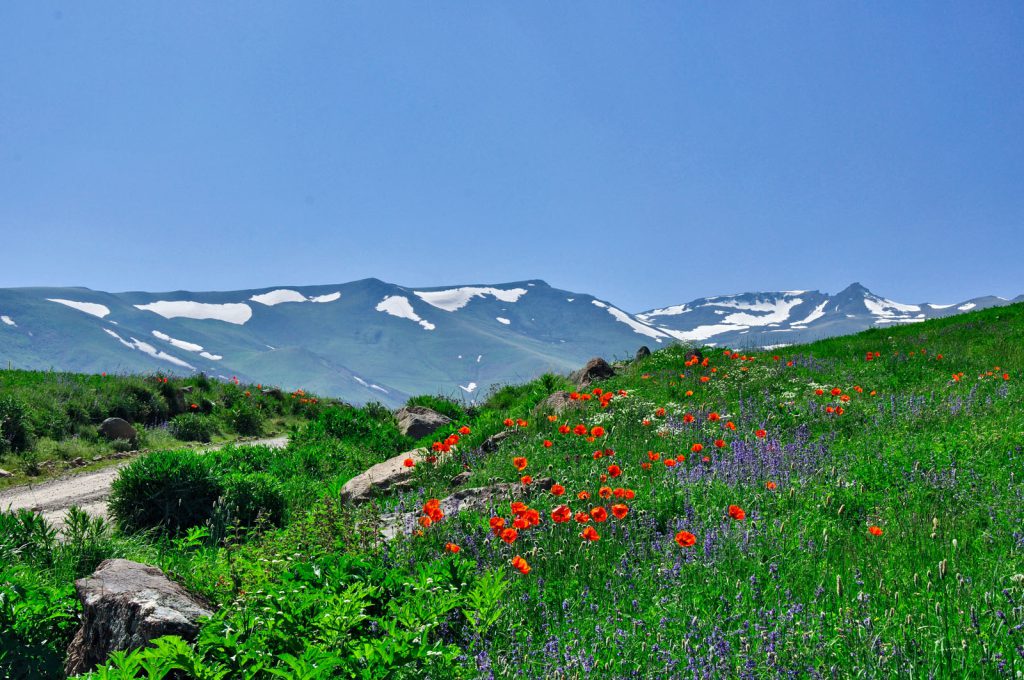
The best time to climb Mount Sabalan is during the summer months, from the middle of June until the middle of September. This stretch is viewed as the peak season for trekking because of steady weather patterns and warmer temperatures, making the uphill journey more doable.
In this window, the temperature varies from a low of around -10°C at night to 0°C during the day. The milder climate permits mountain climbers to take on the summit with summer gear, making it an opportune time for both skilled climbers and novices to attempt the ascent. The beautiful natural surroundings, including the iconic crater lake at the top, is an extra draw for adventurers during these months.
Furthermore, the summer season provides optimal conditions for enjoying the various attractions surrounding Mount Sabalan, such as the Alvares Ski Resort and natural hot springs. With the blend of favorable weather, stunning landscapes, and accessible routes, it’s no surprise that mid-June to mid-September is the peak period for mountain climbers to embark on the challenging yet rewarding journey to the summit of this magnificent peak.
Climbing Sabalan Mountain: Essential Points to Consider
When going to the big Sabalan Mountain Iran, the things you bring depend on what you want to do. For walking around and looking at the sights in the area, you need good hiking shoes, extra warm clothes, hats, sunglasses or goggles, sunscreen, walking sticks, a first-aid kit, water, and snacks.
However, if you want to climb to the very top, you’ll need special mountain climbing gear. This includes tents and sleeping bags for staying overnight, spiky shoes for walking on ice, ice axes, ropes, helmets, and harnesses. Getting used to the high altitude is very important when trying to climb tall mountains like Sabalan.
Conquering the Summit
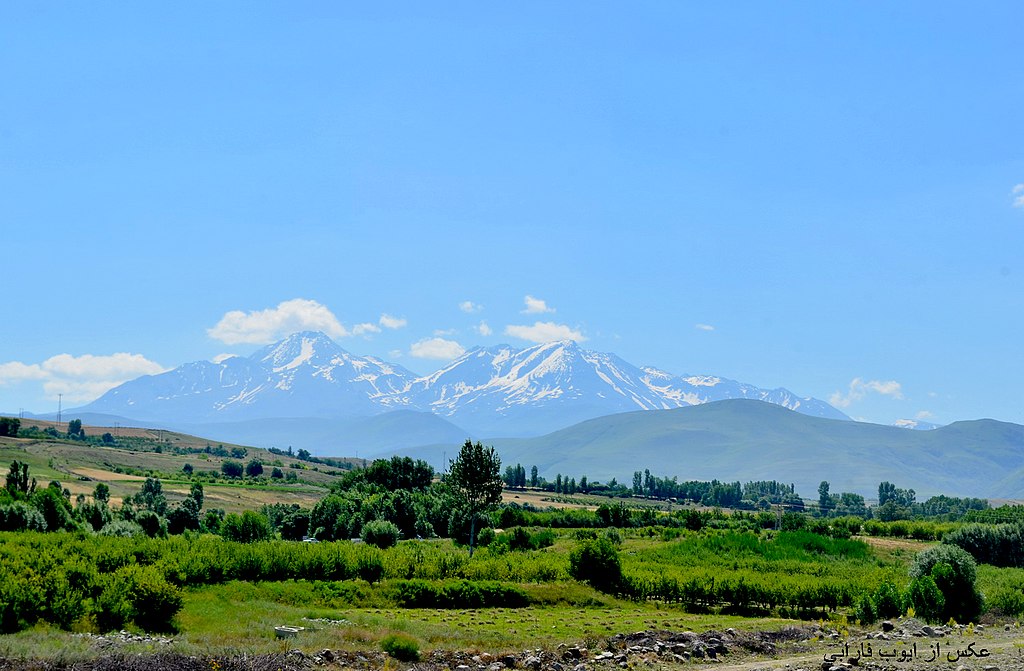
For those brave enough to climb to the top of Sabalan, the northeastern path from Shabil is considered the easiest for first-timers and groups without guides. While difficult, this trail allows vehicles to get you to the shelter at around 3,700 meters, making the first part of the climb easier. From there, the final push to the summit requires special mountain climbing skills and equipment to safely cross glaciers and steep slopes.
No matter which way you go, respecting the mountain’s power and being prepared with the right gear is very important for an amazing yet safe Sabalan experience.
Other Attractions Near Sabalan Mountain
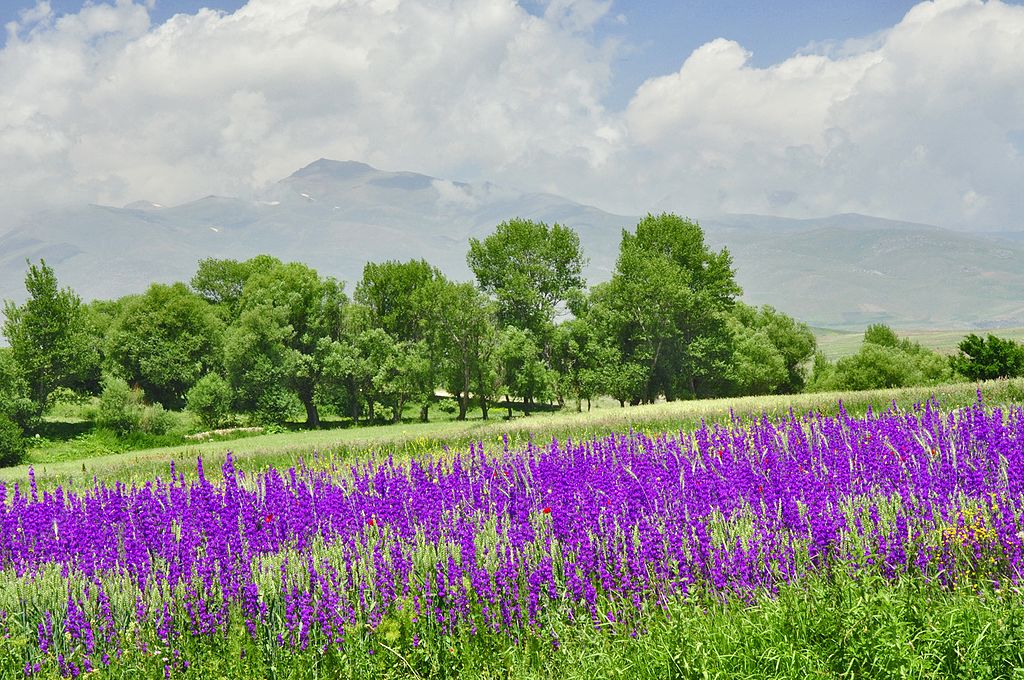
Sareyn
Sareyn is a well-known place for people who love nature. It is a popular city that mixes natural, historical, and cultural attractions. One of the city’s main features is its many hot springs, which offer a clean and relaxing experience. Some of the best hot springs in Sareyn include Gavmish Goli, Sabalan Aqua Therapy Complex, Gahreh Soo Hot Spring, Eshaghe Ghahveh Sooee, and Besh Bajilar Aqua Therapy Complex. These hot springs are famous for their clean and healing waters, providing a perfect spot to relax and feel refreshed. Visiting Sareyn lets you enjoy not only the soothing hot springs but also the rich history and culture of the region.
Shirvan Valley
Shirvan Valley, found 51 km southeast of Meshkin Shahr near Lahroud, is a beautiful and wide area at the base of Mount Sabalan. The valley is 75 kilometers long and stretches for 30 kilometers from Lahroud to Shabil hot springs. Many animals like pigs, foxes, wolves, rams, brown bears, partridges, and doves live here all the time. Birds that travel also visit this peaceful place. The rocks in the valley look like they were carved by artists, making it look similar to the landscapes in Madagascar and Cappadocia, Turkey. The rock formations add to the valley’s unique and lovely view, making it a special place for all who visit.
Shabil Hot Springs
Shabil hot springs are on the path for those climbing Mount Sabalan from the western or northeastern sides. These hot springs, created by the volcano of Sabalan, are clean and well-kept. They offer a great place to relax and ease tired muscles before or after a climb. The warm waters of Shabil are known for their healing qualities, making a visit here a refreshing break in the natural beauty of the area.
FAQs about Sabalan Mountain
Q1: What is the height of Sabalan Mountain?
A1: Sabalan is the third highest mountain in Iran, after Mount Damavand and Mount Alam, reaching 4,811 meters (15,784 feet) at its highest point, the Sultan Peak.
Q2: Is Sabalan Mountain an active volcano?
A2: Sabalan is a semi-active volcano, which means it has been active in the past but is not currently erupting.
Q3: What makes the crater lake on Sabalan Mountain special?
A3: The crater lake at the top of Sabalan is one of the most scenic natural lakes in Iran. It is covered in ice all year round except for the summer months, and is almost 16 meters deep, making it a unique geological marvel.
Q4: What are the main peaks of Sabalan Mountain?
A4: The five main peaks of Sabalan Mountain are Sultan, Heram Dagh, Kasra, and two other unnamed peaks. Sultan is the highest at 4,811 meters.
Q5: How do people typically climb Sabalan Mountain?
A5: The most popular route is the northeastern route starting from Shabil Spa, which has a well-marked path and even a shelter. The western and southern routes are more challenging, going through rough landscapes, glaciers, and nomadic camps.
Discover the Best of Sabalan Mountain with a Customized Tour
Sabalan is a tall mountain in northwest Iran, in Ardabil Province. It is the third-highest mountain in Iran and the 66th most important peak in the world. Sabalan is a semi-active volcano, meaning it was active in the past but isn’t erupting now. Its beautiful nature, hot springs, and the Alvares Ski Resort attract many tourists.
If you want to visit Sabalan Mountain in Iran, a personalized tour is best. To Iran Tour, a top provider of Iran tours, specializes in creating great Iran tours that fit each traveler’s preferences and interests. Their experts understand how to make a smooth, engaging experience so you can make the most of your time in this special region.
Whether you want to hike the challenging trails, see the peaceful alpine lakes, or learn about local traditions, To Iran Tour will help you plan the perfect trip.

